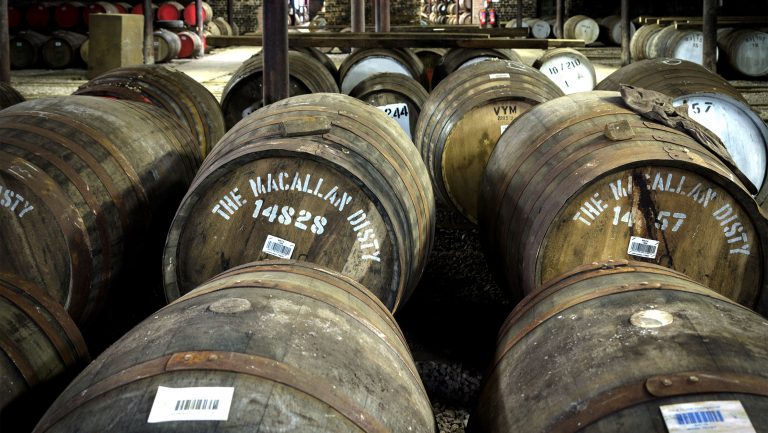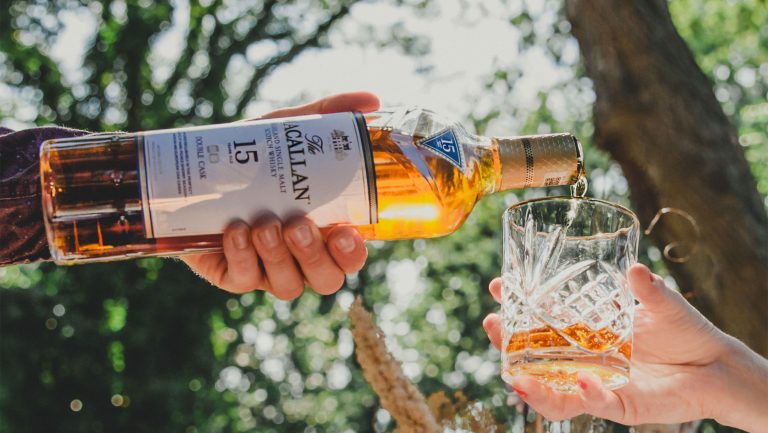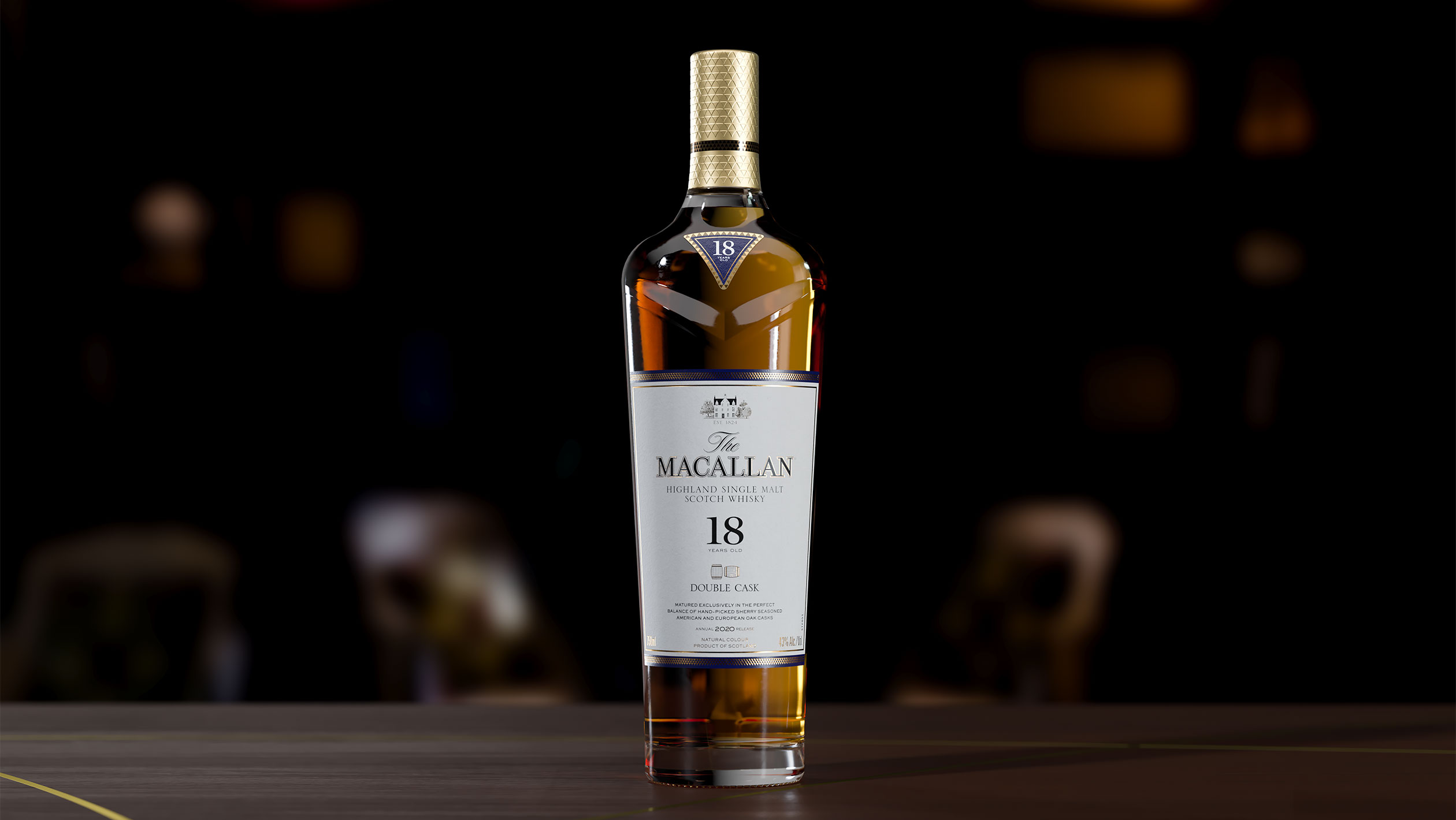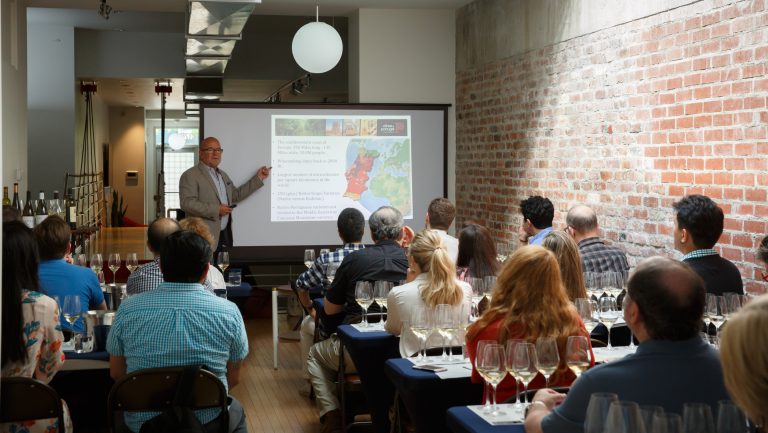This advertising content was produced in collaboration with our partner, The Macallan.
Although many single malt Scotch distillers employ sherry casks to some extent, only one, The Macallan, has been so thoroughly associated with the influence of full-term maturation in sherried oak casks. Ensuring that The Macallan has a steady stream of quality casks is so important to the company that it took matters into its own hands in the mid-1980s, partnering with Spanish coopers and bodegas in the Jerez region to create bespoke and seasoned casks.
Why all this fuss about wood? Ask Stuart MacPherson, Master of Wood for The Macallan, who has been working with oak for more than 40 years, and he gives a very clear answer. “There are all sorts of opinions about what the main influence on the flavor of whisky is,” he says. “We believe up to 80 percent of that final flavor and character is coming from the casks.”
As the man in charge of managing the cask supply, MacPherson knows every twist and turn along the route The Macallan’s casks take, from forests in northern Spain, southern France, and the Ozarks in the U.S., to their arrival in Scotland.

Don’t miss the latest drinks industry news and insights. Sign up for our award-winning newsletters and get insider intel, resources, and trends delivered to your inbox every week.
Due to MacPherson’s emphasis on the role of oak, he works hard to control every step in the cask-making process. “Some people are skeptical about the influence of different barrels on spirits, but we understand the importance wood has,” he says, “and this is why we prefer to have casks made to our specifications rather than buying something on the open market.”
Among the many variables at play in a whisky’s maturation, including warehouse conditions and previous use of the casks, MacPherson believes two factors have the most significant impact on final flavor and quality.
“What we know from our research, irrespective of what anybody says, is that wood species and toasting temperatures have the biggest influence on the development of spirit,” he notes.

A Wine Industry Approach to Toasted Barrels
The Macallan Sherry Oak range, matured in Oloroso sherry-seasoned oak barrels, is a result of a closely managed “tree to cask” system, which starts by identifying suitable tight-grained Quercus robur and Quercus petraea, two distinct species of European oak trees, cutting them, and air-drying the trees in place for a short time to reduce a bit of moisture (wet, freshly cut green timber is heavy and costly to transport). After The Macallan ships the sectioned oak to torrid Jerez, it leaves the wood to dry in the open for an additional 18 months to reduce even more moisture and leach undesirable tannins and toxins.
“You want to give the oak a couple of winters to allow the rain and wind to dry the wood naturally,” says MacPherson. The Macallan doesn’t kiln-dry its oak, as some other distillers do.
Unlike charred bourbon barrels, The Macallan’s casks are toasted like wine casks in a process that heats the wood for longer at a lower temperature. The slower toasting process is designed to break down different chemical compounds in the oak to yield spice notes like nutmeg and cloves and the desired subtly smoky aromas that oak is known to yield.
It’s the time and temperature of the toast that’s the key distinguishing factor for The Macallan’s casks, according to MacPherson. “The wine industry would describe what we use as medium or medium-plus toast,” he says. “We measure the heat inside and out during the toasting, something I don’t think many focus on when developing a barrel for wine.” Most wine-barrel producers toast using formulas based on higher temps for briefer periods, but The Macallan has other priorities that require longer toasting.
“If you don’t get the right amount of heat for the right amount of time into Spanish oak, you don’t get those same levels of flavors,” says MacPherson. “Hemicellulose and lignin are the main flavor drivers coming from the oak, and at about 280 degrees Fahrenheit, you start breaking down different layers that allow you to transfer some of the flavors and characters into the aging whisky.”
Oloroso’s Nutty Impact
The Macallan’s attention to detail at this level started in the 1980s, when the sherry industry stopped shipping wine in casks, which made it harder to source seasoned barrels. It turned out to be an opportunity for the distillery to craft its own barrels using exacting specifications to guarantee the desired taste profile.
The distinctive Oloroso style, which develops its flavors from oxidative aging, became the distillery’s sherry of choice for the quality and flavor of extractives available, contributing both a rich hue and nutty flavors. The Macallan-destined casks—500-liter butts and puncheons and 250-liter hogsheads—are not intended to be part of the traditional sherry solera system to produce sherry for market; instead, they are filled with Oloroso for a short time, between 12 to 18 months.
“That shorter period of time in casks made to our specifications ultimately gives our spirit more flavor from the cask,” says MacPherson. The flavors are more present than they would be in barrels that housed sherry for longer periods, where more of the flavors are absorbed by the sherry.
The lower-alcohol Oloroso (about 18% ABV; compare that to bourbon, which enters 200-liter barrels at around 62.5% ABV) also helps create more potential for flavors and aromas. “With an ex-bourbon cask, you’re going to have a lot more of the extractives removed from that new wood from the high-strength spirit barreled for a longer period in smaller barrels,” says MacPherson. “If we then used that to age our whisky, there would be less of those flavors left for us.”
After the sherry seasoning, the casks are ready to start their whisky journey—altogether, five to six years from forest to Scotland.
Spice from European Oak, Vanilla from American
MacPherson notes that The Macallan is determined to protect its reputation as a brand devoted to sherry seasoning rather than cask finishes, a trend that has become popular among single malt Scotch producers in the past decade. But he acknowledges that even loyal Macallan fans crave innovative expressions.
To that end, The Macallan introduced Double Cask range (with 12-, 15-, and 18-year-old expressions), in which the New and Old Worlds unite. Created from a mix of American (Quercus alba) and European sherry-seasoned oak casks, the Double Cask range brings a unique character to the familiar Macallan flavors.
The American oak receives the same treatment as the European—cut and dried first in the U.S. before being shipped to Jerez for further drying, toasting, and seasoning with Oloroso sherry. Double Cask is predominantly made with that newly seasoned American oak, and the much lighter and wider-grained wood imparts fewer tannins and more vanillin and citrus flavors.
MacPherson describes Double Cask as having creamy butterscotch, candied orange, vanilla custard, and citrus notes, while the classic range showcases aromas of vanilla, dried fruits, and ginger, with a balance of fruit, oak, and spice.
Most Scottish single malt producers employ used and charred ex-bourbon barrels for aging, significantly different from the new, long-toasted ones MacPherson has developed and that are responsible for the flavors and aromas in The Macallan Double Cask range.
“Expressions like this give whisky makers an opportunity to create something different,” says MacPherson. “You build a brand on the reputation of your product, and that’s what The Macallan has done—fully matured in sherry-seasoned casks. But consumers are looking for something different and want to be educated about it. That’s the great thing about single malt—it gives people that opportunity.”

Dispatch
Sign up for our award-winning newsletter
Don’t miss the latest drinks industry news and insights—delivered to your inbox every week.










